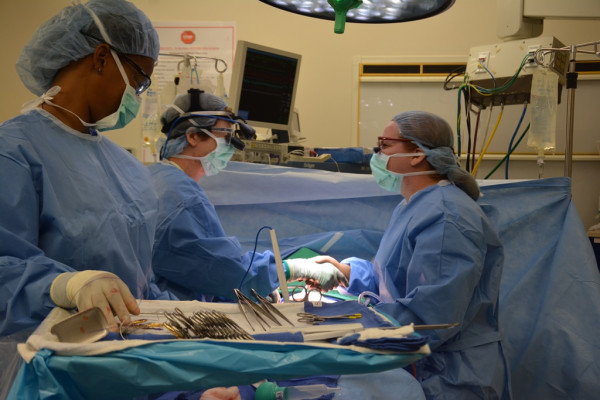http://media.gettyimages.com/photos/the-lifeport-kidney-transporter-an-automated-device-to-assess-and-picture-id2374557A kidney swap, which can involve “ferrying kidneys between two hospitals”, might sound like something strange or perhaps not quite legal, but it actually is a very beneficial thing. It refers to a kidney transplant chain, which is becoming more and more common in the United States.
To start, organ transplants are not easy since your immune system is designed to recognize and attack foreign objects. The donor and recipient have to have certain matching cell surface proteins for the best chance of a successful transplant. Even if the body doesn’t reject the organ right away, most patients will have to take immunosuppressants for the rest of their lives because it’s still possible for rejection to occur later on. It might not be difficult to find someone who’s willing to give up their kidney for you, but it’s difficult to find someone who’s a close enough match.
That’s where the transplant chain comes in. Kidney transplant chains start with an “altruistic donor“–someone who is simply willing to donate a kidney to someone who needs it, no strings attached. Hospitals use software matching programs to identify people who are potential donors by matching several parameters, including blood type. This allows people, who are unable to donate to a friend or family member because they’re not a match, to “swap” kidneys with other people in a similar situation, ensuring that everyone in the chain will receive an organ transplant. So while your kidney might not be a match for your friend, there’s someone else in the system who does match and is also willing to give up their kidney. In return, you donate your kidney to another person in the system that you match.
Image Source: Getty Images / Handout
UCSF and California Pacific Medical Center teamed up for a nine-way kidney transplant chain in early June, the longest transplant chain in one city over a short period of time. San Francisco is a good place for these transplant chains to occur as it has two centers with a lot of experience in transplants: California Medical Center had previously done a six-way transplant chain back in March. Four kidneys were removed from their donors and transported across San Francisco between the hospitals, while the other kidneys were transplanted in the same hospital.
Since organs like the kidneys and the liver are good for up to 48 hours outside of the body, these transplant chains can happen. It’s more difficult to see this being successful with hearts or lungs, which are only viable for a few hours outside of the body. With over 100,000 people who need kidney transplants in the United States alone and the fact that people often have to wait years before they can get one, the kidney transplant chain is an incredibly positive thing for many people. It all starts with one person who’s willing to give up their kidney for someone else.
Feature Image Source: Scott & White Healthcare










